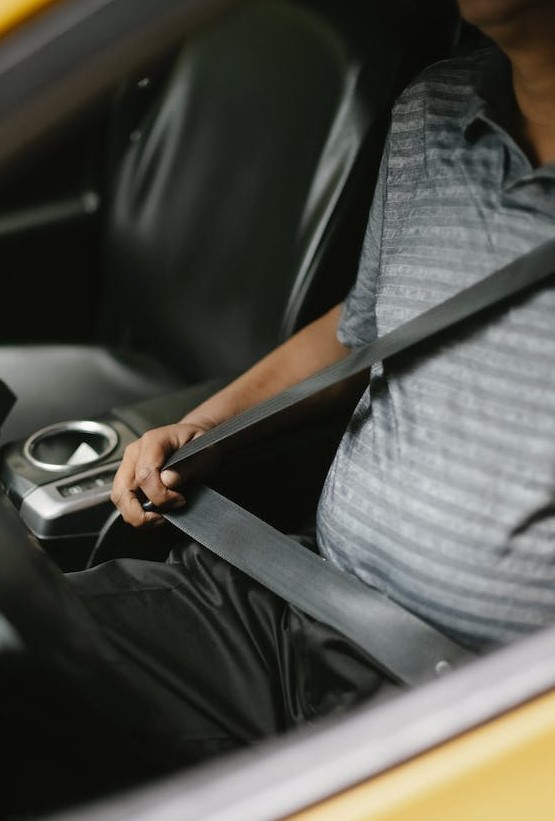Buckling up is more than just a habit; it’s a life-saving practice. In California, stringent seat belt laws are in place to prioritize the safety of drivers and passengers on the road. Understanding the legal requirements and basics of California seat belt law is crucial. It is vital for all individuals who get behind the wheel or ride as passengers. This blog aims to provide a comprehensive overview of California’s seat belt law. It will shed light on the legal obligations and consequences of non-compliance. We will also discuss the broader impact of this safety measure on road safety.

Legal Requirement:
California’s seat belt law is clear and applies to all drivers and passengers in motor vehicles. Regardless of age or seating position, every individual in a vehicle must wear a seat belt. This includes drivers, front-seat passengers, and passengers in the rear seats.
Children and Seat Belt Laws:
For children under 8 or under 4 feet 9 inches tall, California law mandates using a child safety seat or booster seat. The type of seat required depends on the child’s age, weight, and height. The driver is responsible for ensuring that passengers under 16 are properly secured with a seat belt or an appropriate child safety seat.
Primary Enforcement Law:
California operates under a primary enforcement seat belt law. It means law enforcement can pull over a vehicle solely based on a seat belt violation. Even if no other traffic offense is observed, if a driver or passenger is not wearing a seat belt, it is grounds for a traffic stop.
Consequences of Non-Compliance:
Failure to comply with California’s seat belt law can result in fines and penalties. The fines for a seat belt violation vary depending on different factors. These include the age of the unrestrained passenger and whether it is a first-time or subsequent offense. Additionally, the violation may result in points on the driver’s record, potentially impacting insurance premiums.
Exceptions to the Seat Belt Law
While California’s seat belt law is comprehensive, there are certain exceptions to the rule. These exceptions include:
Medical Exemptions:
Individuals with a medical condition that prevents them from wearing a seat belt may be eligible for a medical exemption. However, this requires certification from a licensed physician.
Delivery Drivers:
Delivery drivers continuously entering and exiting the vehicle and making frequent stops may be exempt from wearing a seat belt while actively engaged in delivery duties.
Certain Emergency Vehicles:
Occupants of certain emergency vehicles may be exempt from seat belt requirements during emergencies.
The Broader Impact of Seat Belt Use
Beyond the legal requirements and potential consequences, the use of seat belts significantly impacts overall road safety. Seat belts are one of the most effective ways to reduce the risk of injury or death in a motor vehicle collision. According to the National Highway Traffic Safety Administration (NHTSA), seat belts saved an estimated 15,000 lives in the United States in 2017.
Proper seat belt use can:
Prevent Injuries:
Seat belts are designed to distribute a crash’s force across the body’s strongest parts. This reduces the risk of serious injuries.
Save Lives:
Wearing a seat belt is one of the most effective ways to survive a crash. It helps prevent occupants from being ejected from the vehicle, a major factor in fatal crashes.
Protect Against Airbag Injuries:
While airbags provide additional protection, they are designed to work in conjunction with seat belts. Failure to wear a seat belt can sometimes lead to more severe injuries from airbag deployment.
Set an Example for Others:
Responsible seat belt use sets a positive example for passengers. It is vital for children encouraging them to adopt safe practices.
Educational Campaigns and Enforcement:
California regularly conducts educational campaigns and enforcement initiatives to promote seat belt use and raise awareness about its importance. Law enforcement agencies participate in campaigns such as “Click it or Ticket”. This reinforces the message that seat belt compliance is a legal requirement and a critical safety measure.
Conclusion
California’s seat belt law is more than a legal obligation. It’s a commitment to safety and well-being on the road. Buckling up is a simple yet powerful action that can save lives and prevent injuries. Whether you’re a driver or a passenger, making seat belt use a non-negotiable habit contributes to a safer driving culture. It ensures that everyone on the road has the best chance of arriving at their destination safely. So, remember to buckle up every time you hit the road.


